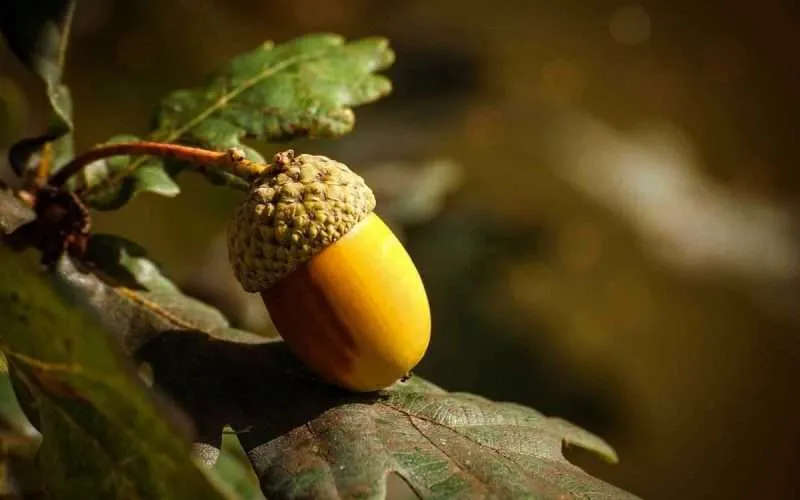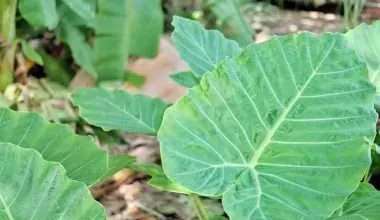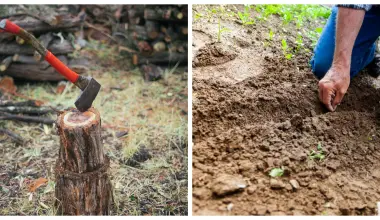Table of Contents Show
The most common and freely scattered fruit or rather tree seed is the acorn. Just as you pass over any public patch of green, you’ll be sure to notice the thousands of acorns scattered at your feet. Acorns are probably the most common seeds seen in the States.
This often leads one to wonder how many trees it might take to produce that many acorns, and exactly which trees it is that produce this seed. The answer may surprise you. The tree that produces acorns is the Oak tree. It is the sole producer of these nuts.
What’s really surprising is the number of acorns that a single oak tree produces in its lifetime. A single oak tree can live up to a thousand years and in that timeframe the tree manages to produce hundreds of thousands of acorns.
What makes this surprising is that if a single oak tree just manages to produce one acorn that grows into a tree in its lifetime, then the species will live on, yet oak trees are almost always dropping their seeds on the ground.
Acorns themselves are, however, quite iconic nuts. There are plenty of things that you can actually do with fallen acorns. There are a range of things that acorns can be used for. Using acorns for various recipes and crafts is just one of the many things that you can do with these nuts. They can, alternatively, be left for wildlife, or be planted, or even turned into flour.
Where do acorns come from
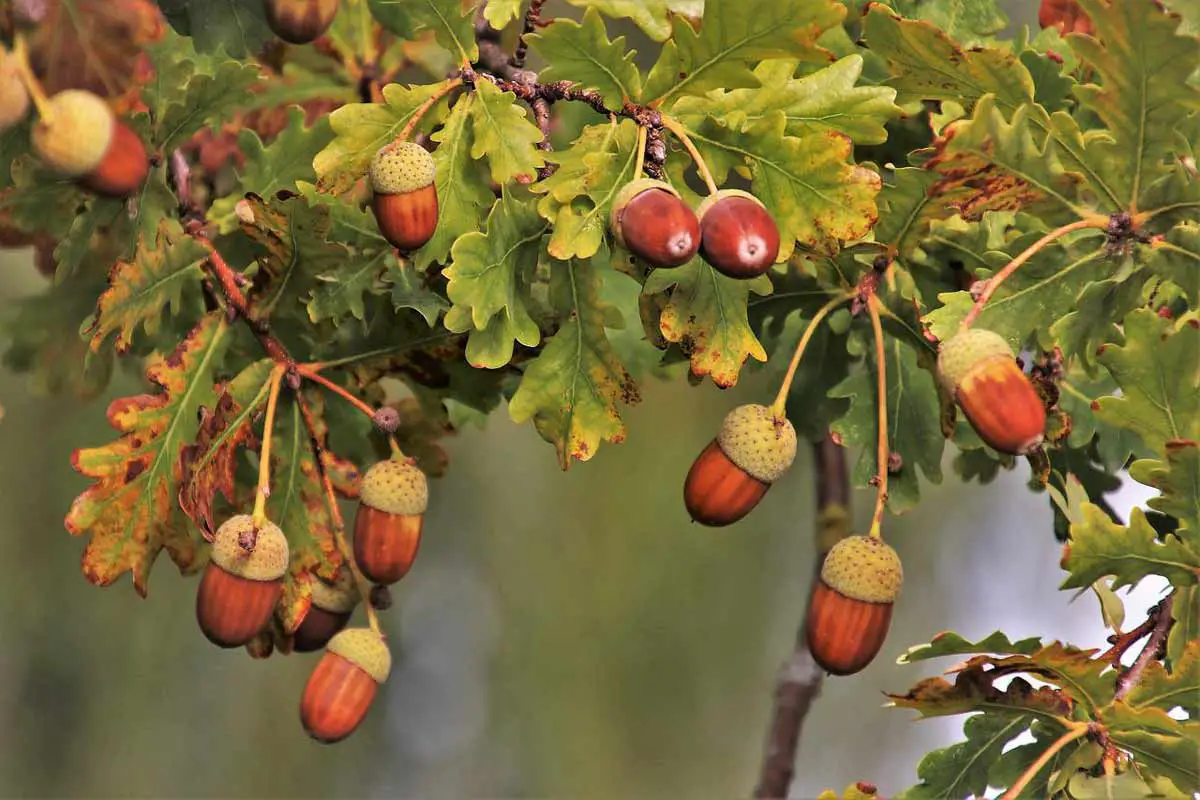
We’ve already mentioned that acorns are only produced by oak trees. However, amongst oak trees it is the mature ones that actually produce batches of acorns. So if you recently planted an acorn in hopes of getting more nuts then you may need to wait a few decades.
Oak trees can take between 20 to 30 years to fully mature and start producing acorns for consumption. While that may seem like a pretty long time for a tree to bear fruit, it is important to remember that an oak tree lives for a thousand years. So in reality it still only takes about 2 to 3 percent of its lifetime to mature.
While oak trees are the only trees that produce acorns, there still are a number of trees that produce nuts that may seem awfully similar to acorns. It is therefore, pretty common for people to get confused between acorns and other nuts.
Do all acorns look the same?
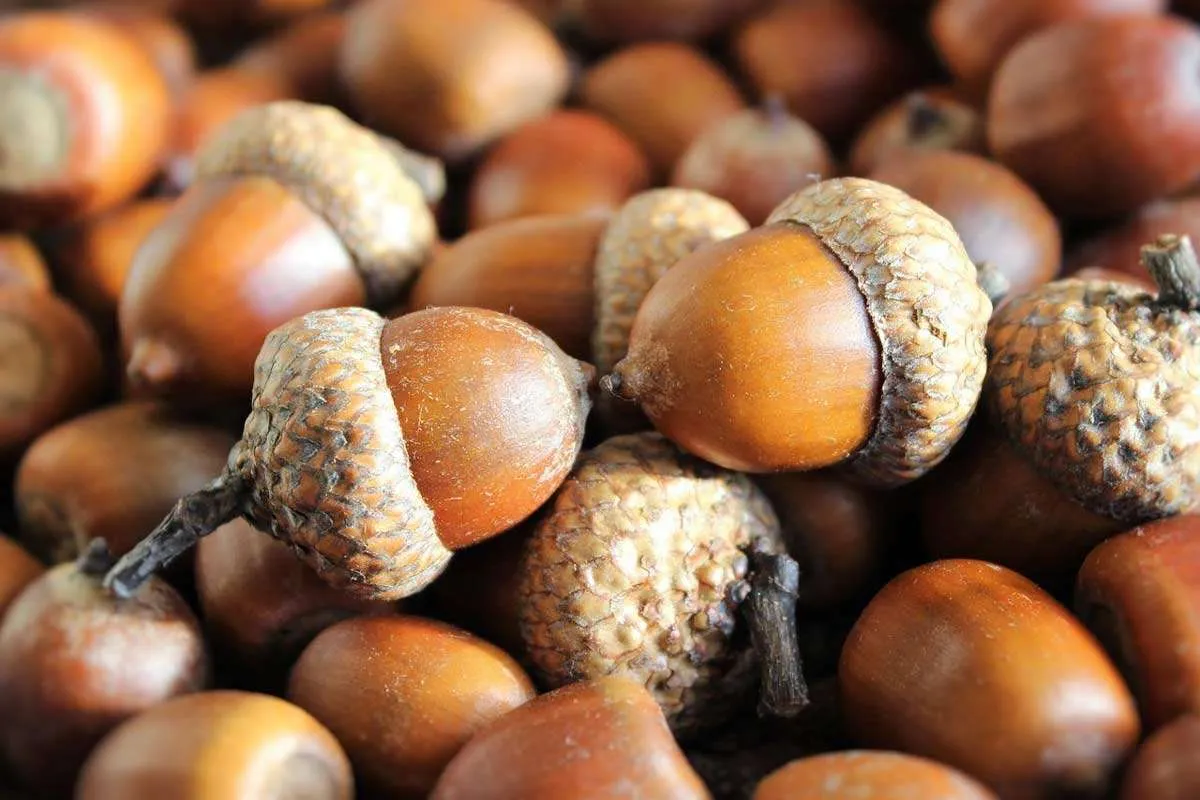
Being the iconic nut that it is, almost every single person on Earth has a visual memory of what an acorn looks like or at least what one is supposed to look like. We all have that perfect acorn imprinted in our minds. A small oval shaped nut with a large cap topping it off.
While that may be how we describe the ideal acorn, it is not how all acorns look. Different subspecies within the oak tree family produce slight variations of the acorn. Some of these variations look exactly the same, while many differ in their appearance.
Some acorns may have a round shape while others such as the Valley Oak or the Coast Live Oak have more of an oblong shape. Others still have other variations in their appearances. Such as the Bur Oak and the Chestnut Oak which produce acorns that are darker in color compared to nuts produced by the Pin Oak or the Blackjack Oak.
It may be impossible to actually list down all the variations that exist in the acorn family. The point is that every tree or species of trees produces its own unique variation on the acorn. There are a total of about 90 different types of oak trees so you can imagine just how many types of acorns actually exist.
While it may seem like an impossible task to actually categorize oak trees, it’s rather a simple task. The reason this is so simple is because generally oak trees are categorized in just 2 categories. These are red oaks and white oaks.
The main difference in these two types of oak trees is basically the time period during which their seeds germinate. Typically it is the white acorns that germinate quicker. White acorns usually are able to sprout new saplings in the same season that the seeds fall in.
The red oak tree acorns on the other hand require more time. They have a period in which the seeds lay dormant. This is known as the dormancy period and often lasts about a year. Thus the new oak saplings sprout after an entire year.
While this is the main difference between the two, it is still only the difference we use to categorize the types of oak trees. There are other differences that exist between the two groups of oak trees, as well as further differences that exist between individual oak trees as well. Some of these differences make certain oak tree acorns more suitable for certain tasks.
One of these differences is the tannin concentration in acorns. Tannin is a chemical compound present in acorns that gives them their bitter taste. It is usually much lower in concentration in white oaks. This is why white oaks are more suitable for eating.
Stuff you can do with acorns
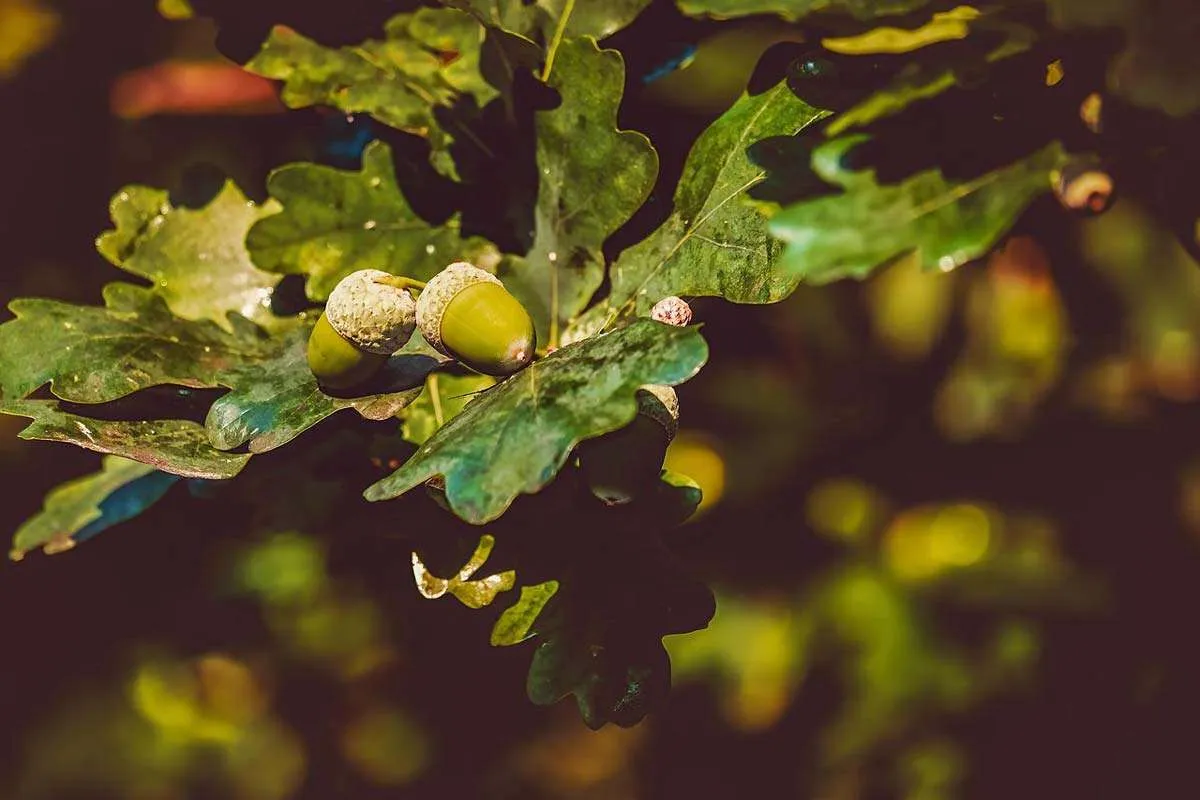
Acorns were initially the main food source for early settlers in North America. This was mainly due to the high supply and availability of the acorns in the region and also partly due to the fact that the acorns have high nutritional value in such a compact size.
Of course there were other factors that contributed to the mass use of acorns as a food supply in that time. Such acorns are easy to distinguish amongst other potentially poisonous nuts and mushrooms.
Another factor that favored the use of acorns as a food source is their versatility. Acorns are probably the most versatile nuts known to man. This is primarily on account of the fact that there are dozens of ways to prepare and consume acorns. Hence, there are plenty of dishes that can be made with acorns. This in particular drastically increased the acorns’ popularity.
Though beyond eating acorns can be used for several other purposes as well. We will explore those purposes below.
1. Eating Acorns
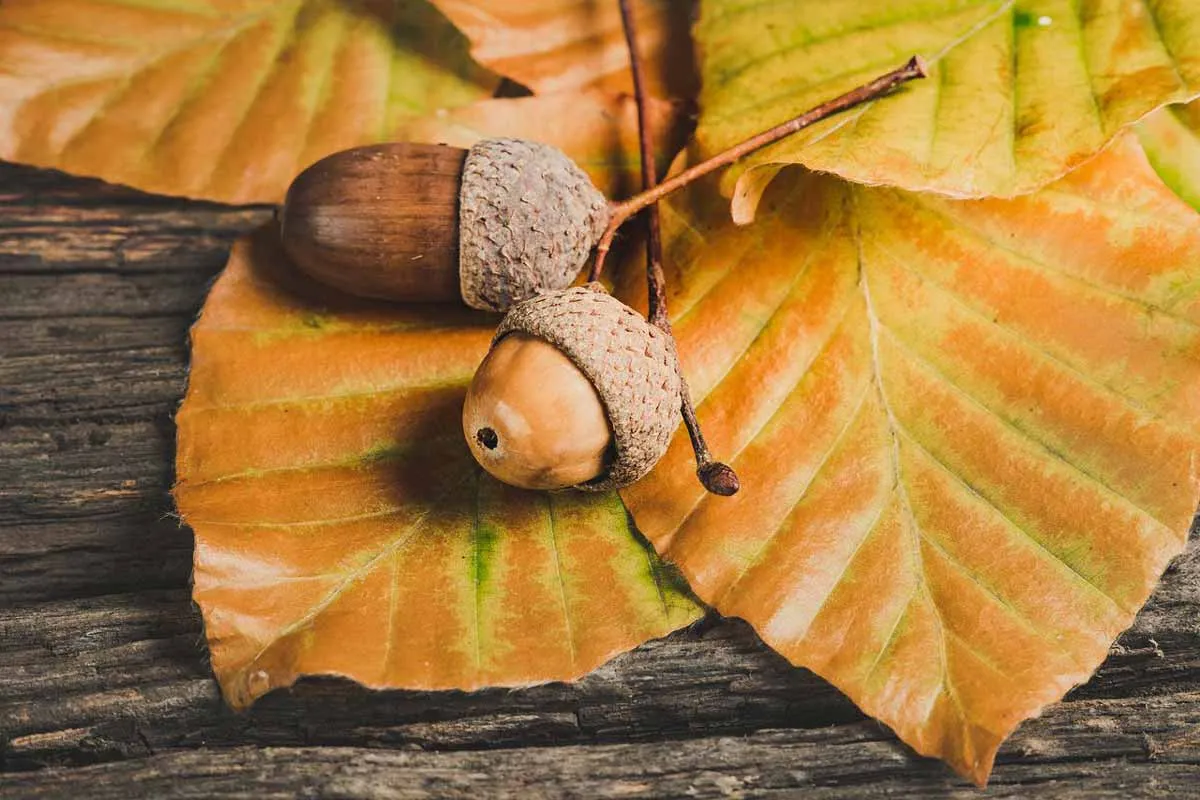
Eating an acorn probably seems like the normal thing to do. After all, our ancestors in North America did use oak acorns as their primary food supply. Surprisingly, when earring an acorn it is important to first cook it or process it. An acorn should not be eaten raw.
The reason eating an oak acorn raw is discouraged is because acorns actually are poisonous to humans, horses, cattle and other critters. To be a bit more precise it is not in fact the acorn itself which is poisonous to us but rather a chemical found inside the nut.
To extract or more accurately remove the poison it is important to first boil or soak the oak nut in water. When soaked in cold water the chemical, tannin as it is called, dissolves in the water and is removed from the nut. This results in perfectly healthy oak acorns for everyone.
Alternatively, another just as simple route to process the acorn is to just simply boil the nut in fresh water for about 5 mins. In that short amount of time the oak acorn leaches out the tannin and is perfectly safe for human consumption.
Both these methods, while ideal for removing the toxic chemical tannin from the nuts, do absolutely nothing to other proteins, carbs or fats present in the nut. This is extremely beneficial as all the nutritional value of the oak acorns is present in its carbs and proteins.
Another interesting fact is that oak acorns have a large number of vitamins and minerals in them also. These are chemicals that humans require in small doses to stay healthy. A lack of these minerals and ions can often lead to severe diseases such as rickets and scurvy. The small amounts present in an acorn are usually enough to keep a person healthy.
Additionally acorns can be quite a treat when prepared properly. While there are plenty of recipes available at click, there are some reasonably simple ones that almost anyone can make. These are often topped by caramelized acorns and candied acorns. These are simple dishes that require the bare minimum and turn out as quite a treat.
Baking acorns
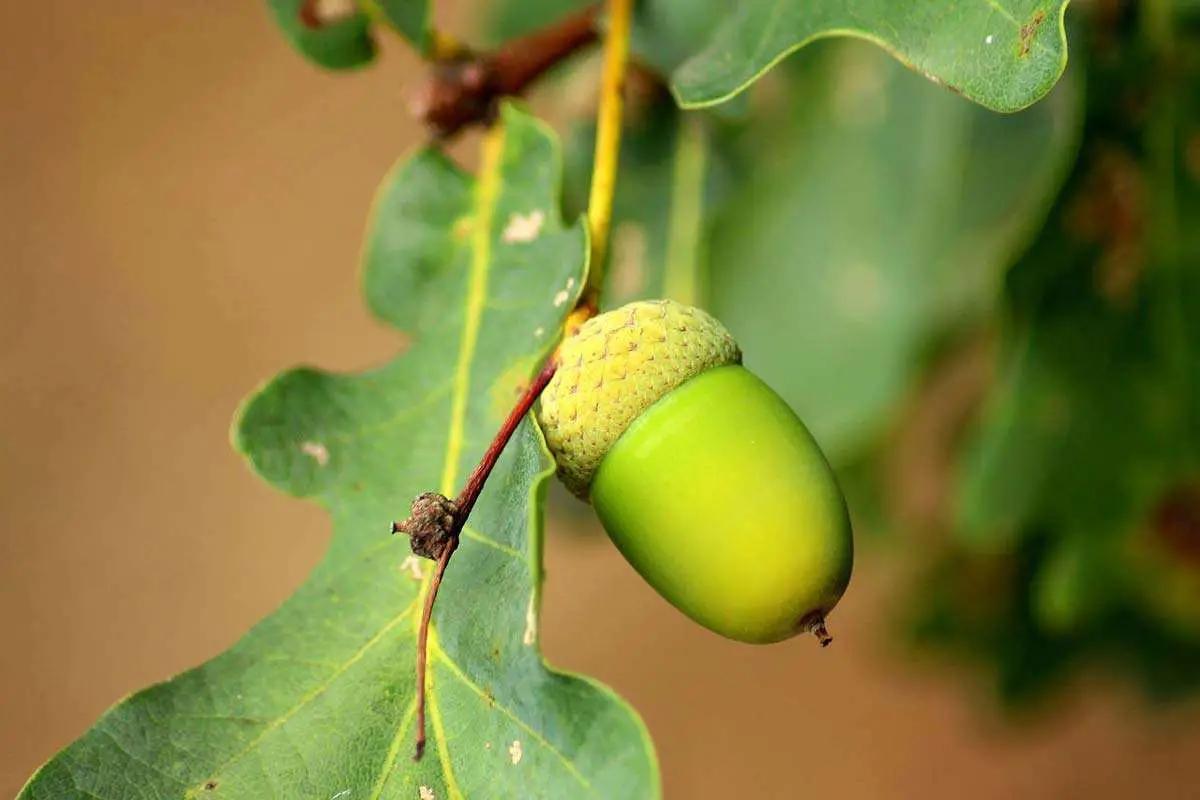
Another common practice when considering eating acorns is to use them for baking. Acorns can be made into acorn flour and consumed for baking purposes. While making acorn flour is a matter of a few simple steps, actually making the flour is a tedious and time consuming task.
To make acorn flour you must first leach the tannin using cold water. The reason the cold leaching technique is preferred when making flour is because this preserves certain starches in the process which give the acorn flour a more consistent texture.
As opposed to cold leaching, boiling the acorns removes all the starches present in the nuts. This leaves the end flour with not as consistent a texture as even the all purpose flour that we all normally use. Hence, if you do have the patience than cold leaching is the right way to make your acorn flour.
While acorn flour is pretty much just like normal all purpose flour, the acorn flour has greater nutritional value and a slight nutty taste that is absent in normal all purpose flour. The nutritional benefits of acorn flour are usually why it is preferred over regular flour. Though the nutty aftertaste in the acorn flour is also quite an experience.
Once you’ve managed to go through all the tedious work and your acorn flour is ready. You may simply add it to whatever you choose to make and start baking!
Using acorns for arts and craft projects
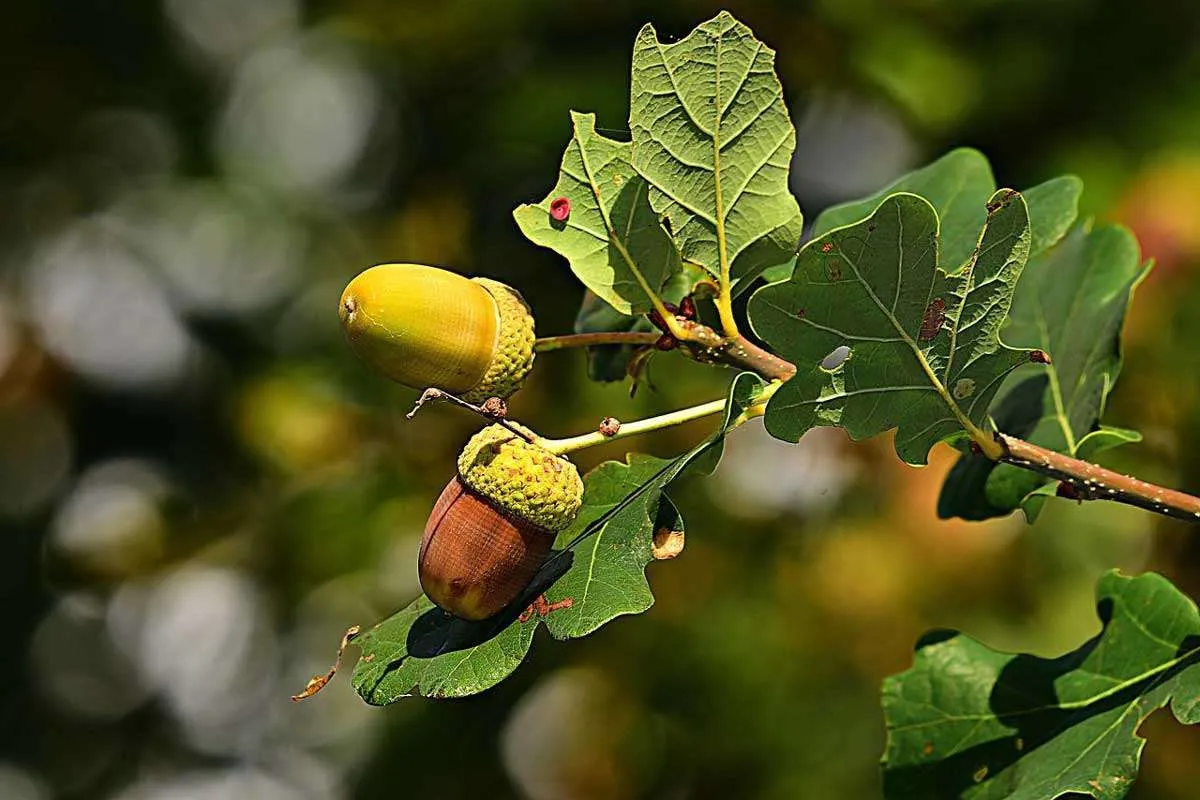
Acorns, along with pumpkins, golden leaves, and scarecrows, are some of the most iconic fall symbols. When you notice acorns on the ground, you know it’s fall!
As a result, acorns may be used in a range of crafts and decorations. Because of their size, acorns are easy to handle, and both the nut and the cap can be used as ornaments.
You can use them to construct wreaths, photo frames, mason jars, and even candles! There are several suggestions floating around the internet for making your house beautiful and toasty as the winter months approach.
Planting the acorns
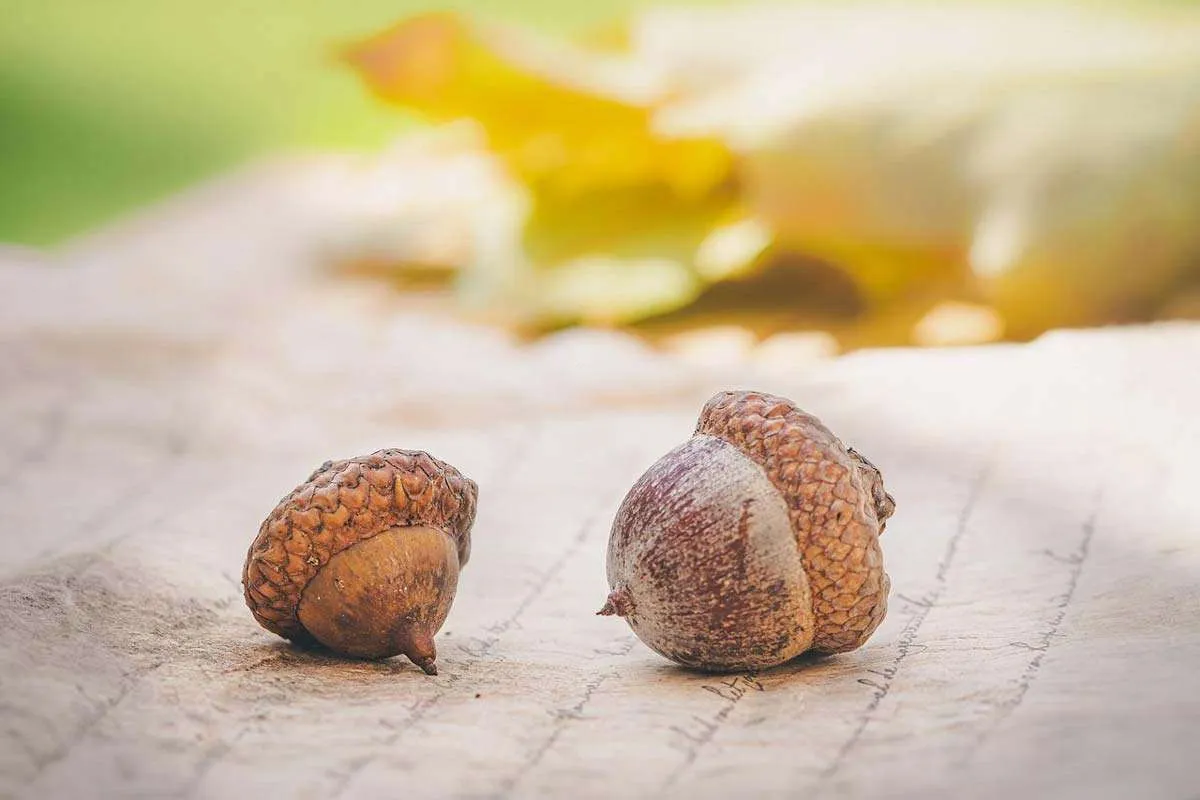
The next thing we recommend is that you plant the acorns you locate. This is something that the entire family can enjoy. The oak tree, if successful, can survive for decades, if not centuries.
If you’re intrigued, you can learn more about how long it takes an oak tree to mature here.
Overall, growing oak trees from acorns is a simple procedure. It might take as little as a few weeks for your acorns to sprout, but it can take up to 30 years for an oak tree to develop and begin producing its own acorns.
You will be doing nature a favor if you plant the acorns you discover. All of the tiny creatures in the area benefit from the shade and shelter provided by oak trees. Because they are already used to the soil and climatic conditions, acorns from local oak trees are more likely to grow in that region.
